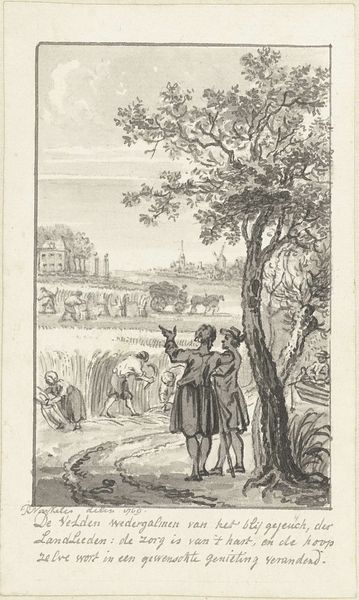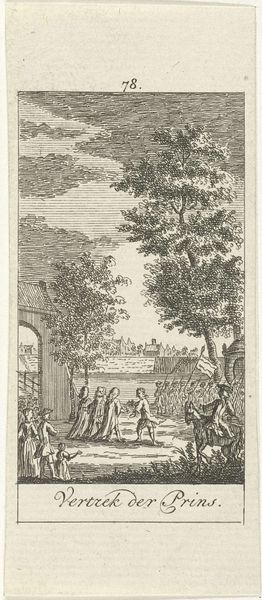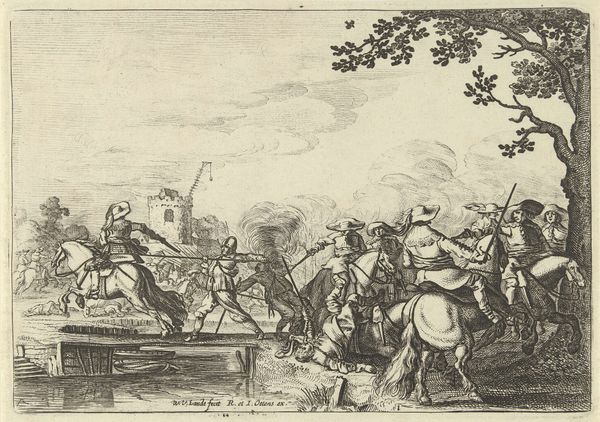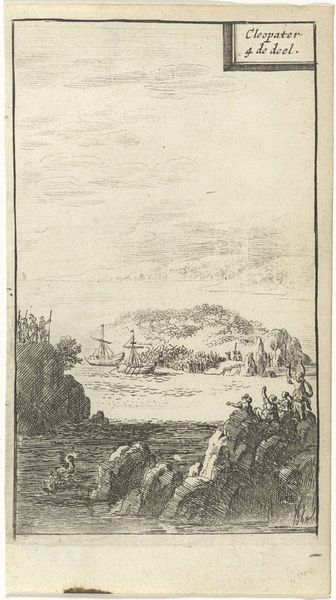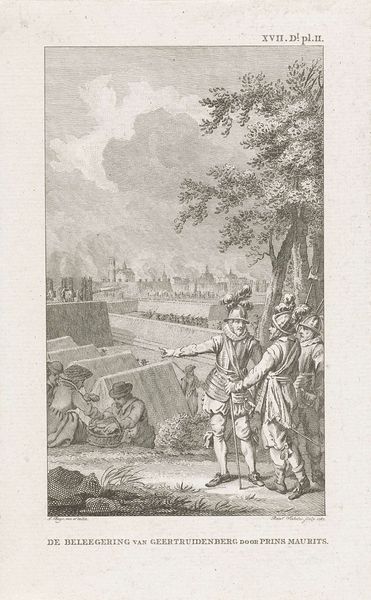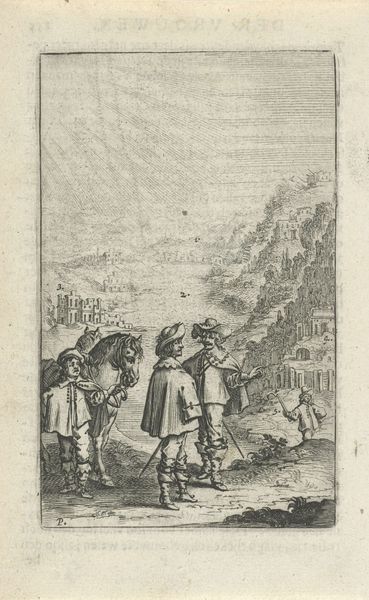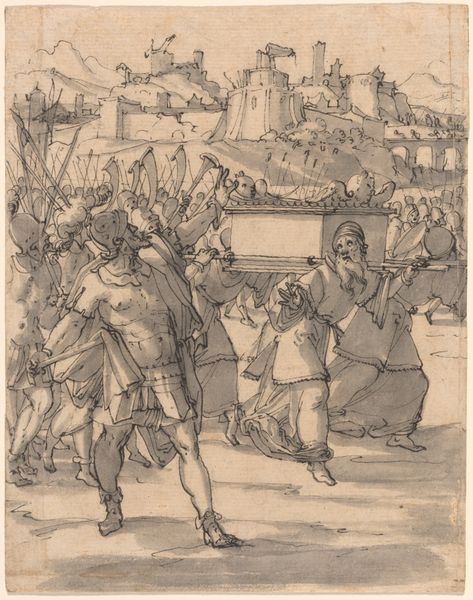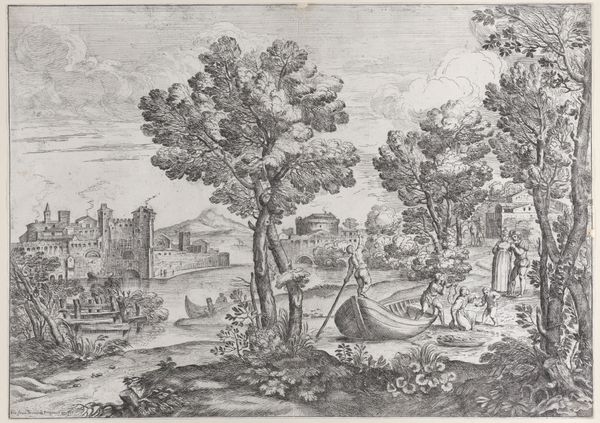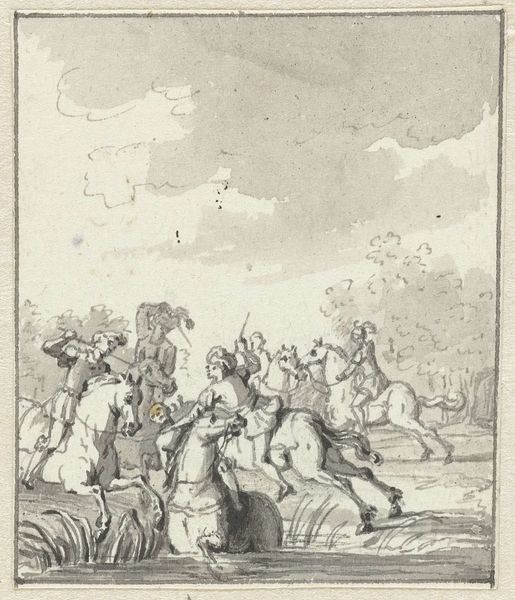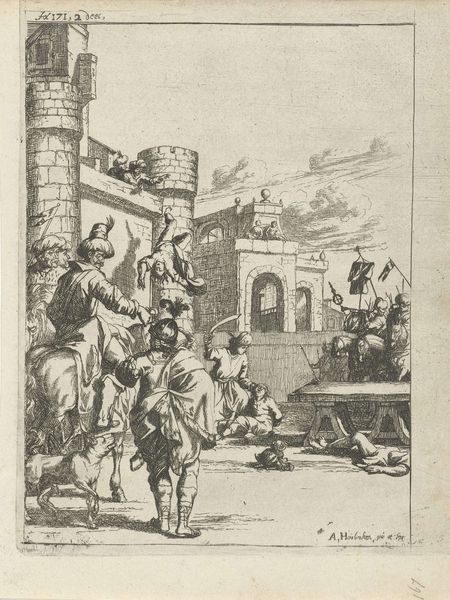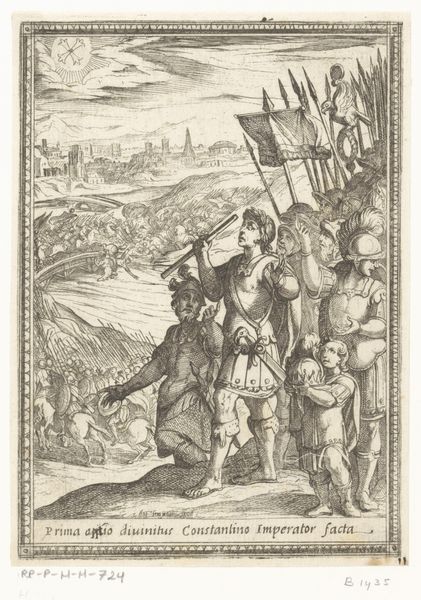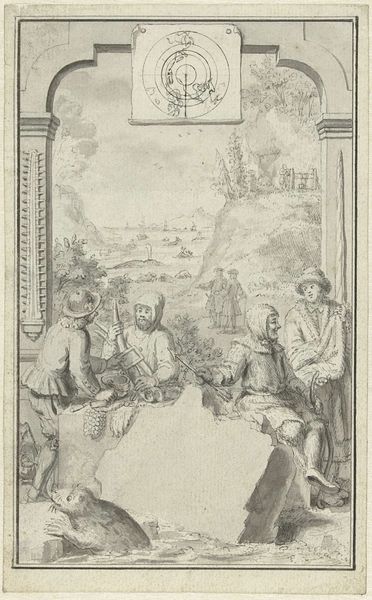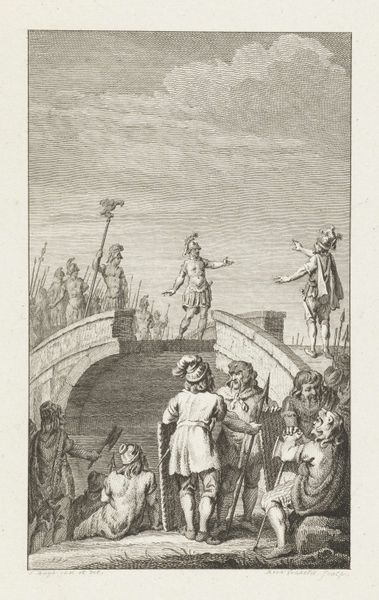
Dimensions: height 148 mm, width 89 mm
Copyright: Rijks Museum: Open Domain
Editor: So this is "Prins Maurits in het leger voor Geertruidenberg, 1593", a pen and ink drawing made between 1785 and 1787 by Jacobus Buys. It depicts a siege. The monochromatic ink wash gives it a rather somber mood. What do you see here? Curator: I see a potent confluence of ambition, history, and the psychology of leadership etched in ink. Look at how Buys captures Prince Maurits' posture: the forward-pointing gesture, the steady gaze, almost a symbolic embodiment of Dutch resolve. Do you notice how he’s positioned slightly apart from his officers, yet connected by that implied line of sight? Editor: Yes, I see what you mean. There’s a sense of detachment and connection at the same time. The figures seem to be participating in something grander. Curator: Precisely! Buys is using Maurits as a cultural icon. The siege of Geertruidenberg wasn't just a military maneuver; it became a symbol of Dutch resilience. Think about the weight that images of leadership, like Maurits here, carry through generations. Buys is participating in shaping how his contemporaries remember and interpret their history. How does the overall landscape impact the feel of the picture? Editor: Well, it seems to emphasize the scale of the siege, maybe? All those sharp angles…the buildings feel almost menacing. Curator: They speak to both opportunity and threat, the core dialectic of any conflict, whether in war or in one's own life. It also speaks to Romanticism, with the detailed rendering of historical events. Ultimately, do you think it helps in preserving that memory? Editor: Definitely. I hadn't considered how powerful symbols could be and how art contributes to a nation's shared identity. Thanks! Curator: It’s a dance between what we see, what we remember, and what we choose to carry forward.
Comments
No comments
Be the first to comment and join the conversation on the ultimate creative platform.

